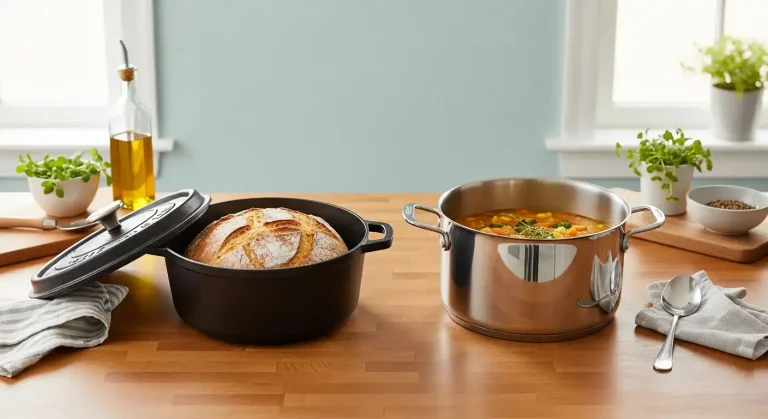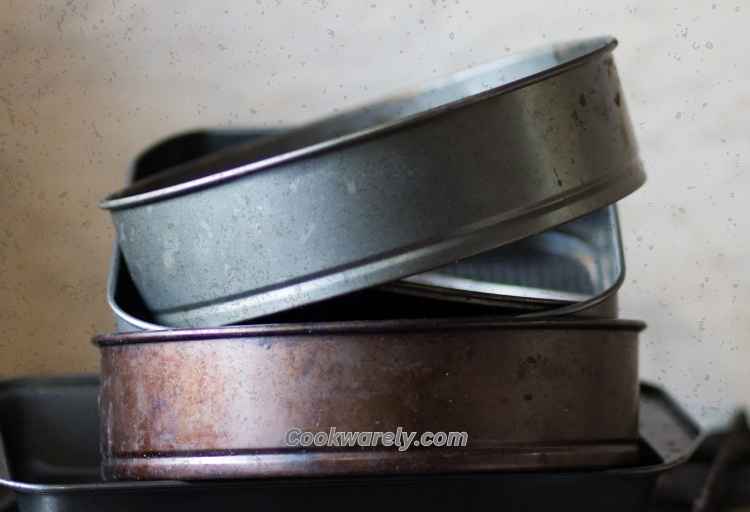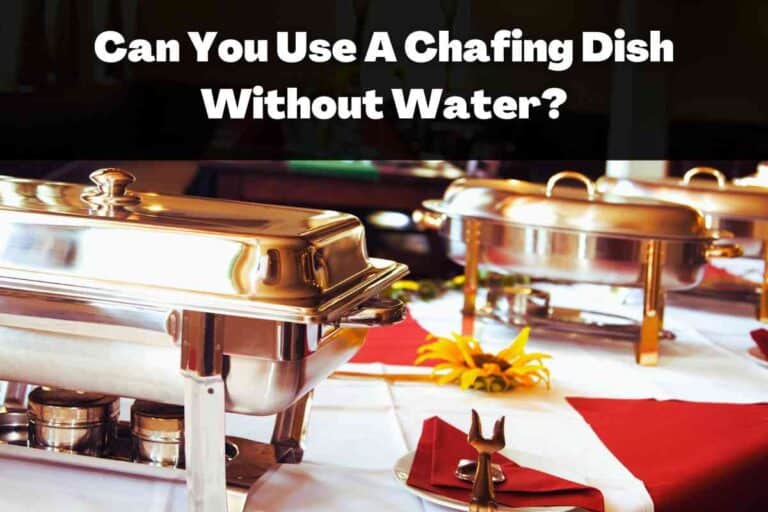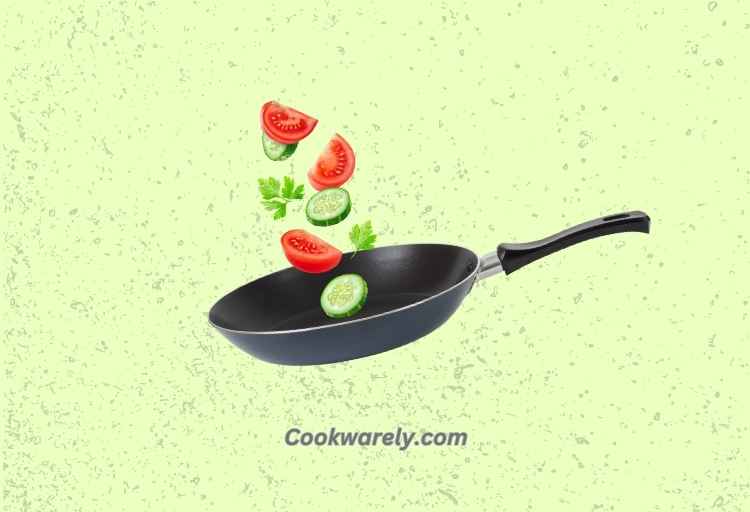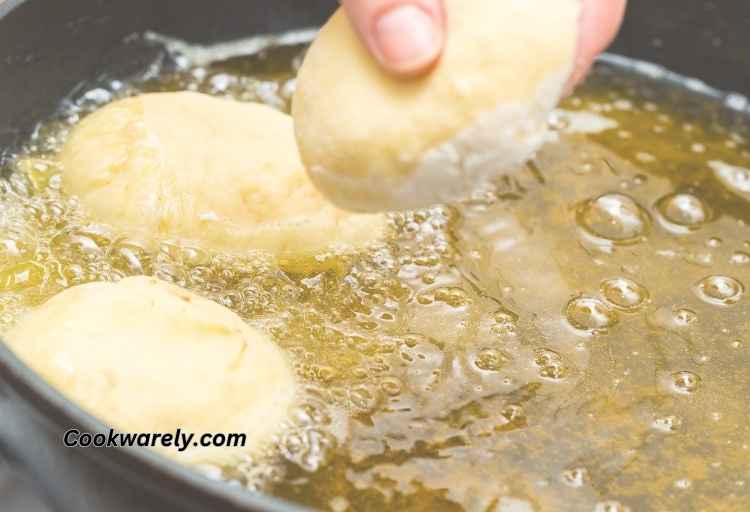Wok Vs Dutch Oven: Which Cookware Suits Your Kitchen?
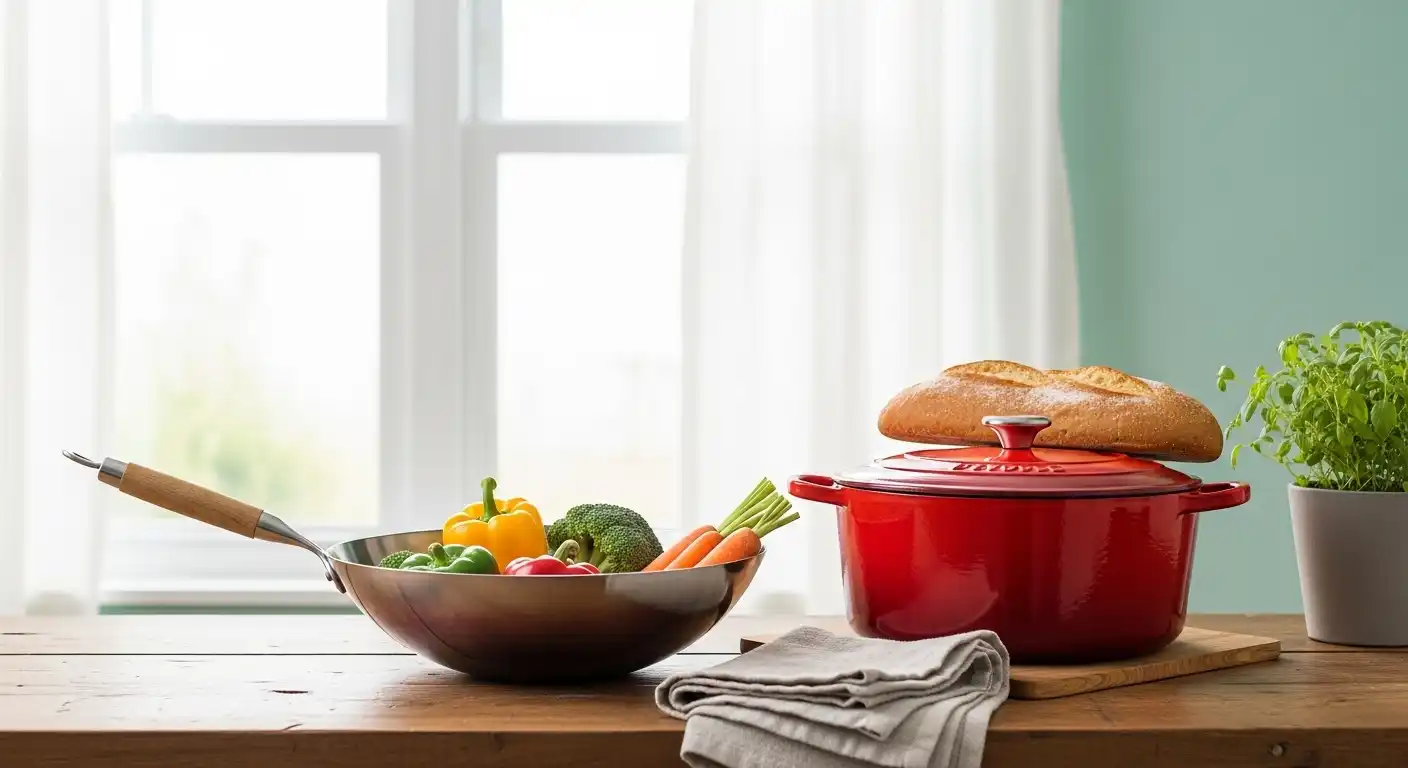
When it comes to versatile cookware, the wok and the Dutch oven stand out as kitchen powerhouses.
Each brings unique strengths to the table, catering to different cooking styles and recipes.
Whether you’re stir-frying vegetables or slow-cooking a hearty stew, understanding the differences between these two can help you choose the right tool for the job.
This blog post dives into the Wok Vs Dutch Oven debate, exploring their designs, materials, cooking techniques, and ideal uses.
🎄 Christmas & Year-End Amazon Deals !
Don’t miss out on the best discounts and top-rated products available right now!
*As an Amazon Associate, I earn from qualifying purchases.
By the end, you’ll know which one fits your culinary needs and how to make the most of each.
What Is a Wok?
A wok is a round-bottomed or flat-bottomed pan with high, sloping sides, originating from Chinese cuisine.
Traditionally made from carbon steel or cast iron, woks are designed for high-heat cooking methods like stir-frying, deep-frying, and searing.
The shape allows for even heat distribution and easy tossing of ingredients. Woks are lightweight, making them ideal for quick, high-energy cooking.
For tips on maintaining a wok, check out how to season a wok on an electric stove.
Woks come in various sizes, typically 10 to 14 inches in diameter. To find the perfect fit, see what size wok should you buy?.
What Is a Dutch Oven?
A Dutch oven is a heavy, thick-walled pot with a tight-fitting lid, often made from cast iron or enameled cast iron.
It’s a staple in Western kitchens, known for its ability to retain and distribute heat evenly over long periods.
Dutch ovens excel in slow-cooking methods like braising, stewing, and baking.
They’re perfect for dishes that require consistent, low heat, such as soups or artisan bread.
For sizing guidance, explore what size Dutch oven for a family of four?.
Their durability makes them oven-safe and versatile for stovetop-to-oven recipes.
Learn more about their care in seasoning a cast iron Dutch oven.
Wok Vs Dutch Oven: Design and Material Differences
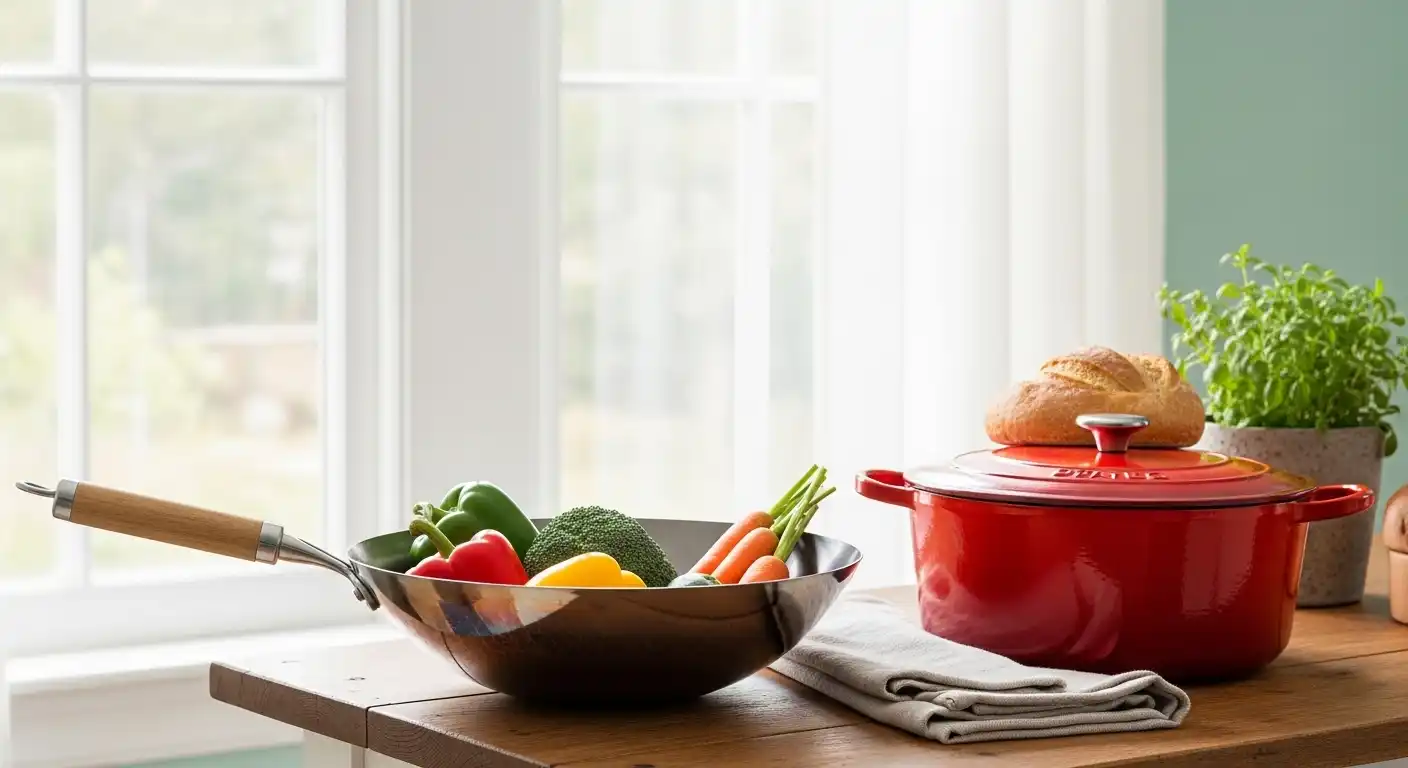
Wok Design and Materials
Woks have a distinctive shape with a wide top and a narrow base, allowing for quick heat-up and easy ingredient movement.
🎄 Christmas & Year-End Amazon Deals !
Don’t miss out on the best discounts and top-rated products available right now!
*As an Amazon Associate, I earn from qualifying purchases.
Carbon steel woks, like the Lodge cast iron wok, are popular for their durability and ability to develop a non-stick patina over time.
Some woks are designed for specific stovetops. For example, can you use a round-bottom wok on an electric stove? explores compatibility issues.
Dutch Oven Design and Materials
Dutch ovens are heavier, with thick walls and a robust lid to trap heat and moisture.
Enameled versions, like those from Lodge, resist rust and don’t require seasoning, unlike bare cast iron. Learn more in Lodge Dutch oven.
Their flat base ensures stability on any stovetop, including induction. They’re built for endurance, often passed down through generations.
Cooking Techniques: Wok Vs Dutch Oven
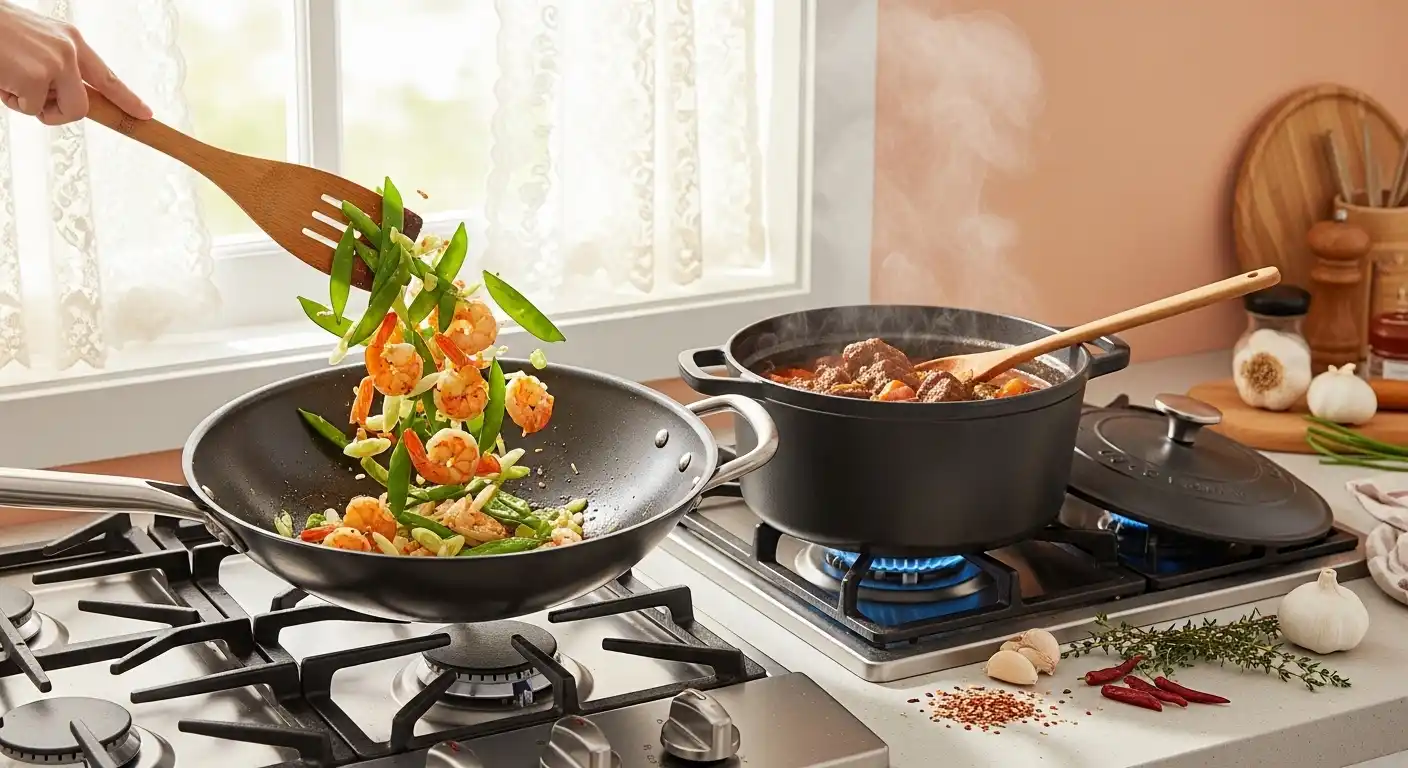
Wok Cooking Techniques
Woks shine in high-heat, fast-paced cooking.
Stir-frying is their hallmark, allowing you to cook vegetables, meats, and noodles quickly while preserving texture. For tips, see how to cook in a wok.
They’re also great for deep-frying, steaming, and even making popcorn. Curious? Check out how to make popcorn in a wok.
Dutch Oven Cooking Techniques
Dutch ovens are slow-cooking champions. They’re ideal for braising tough cuts of meat, simmering soups, or baking no-knead bread.
Their ability to maintain steady heat makes them perfect for one-pot meals.
They can also handle roasting and frying, though they’re less agile than woks. For alternatives, explore Dutch oven vs roasting pan.
Heat Distribution and Cooking Speed
Woks heat up quickly, making them perfect for rapid cooking.
🎄 Christmas & Year-End Amazon Deals !
Don’t miss out on the best discounts and top-rated products available right now!
*As an Amazon Associate, I earn from qualifying purchases.
Their thin walls respond fast to temperature changes, ideal for stir-fries that need intense heat. However, they’re less suited for long, slow cooking.
Dutch ovens, with their thick walls, distribute heat slowly and evenly.
This makes them excellent for dishes that need hours to develop flavor, like stews or chili. They retain heat well, keeping food warm long after cooking.
Versatility in the Kitchen
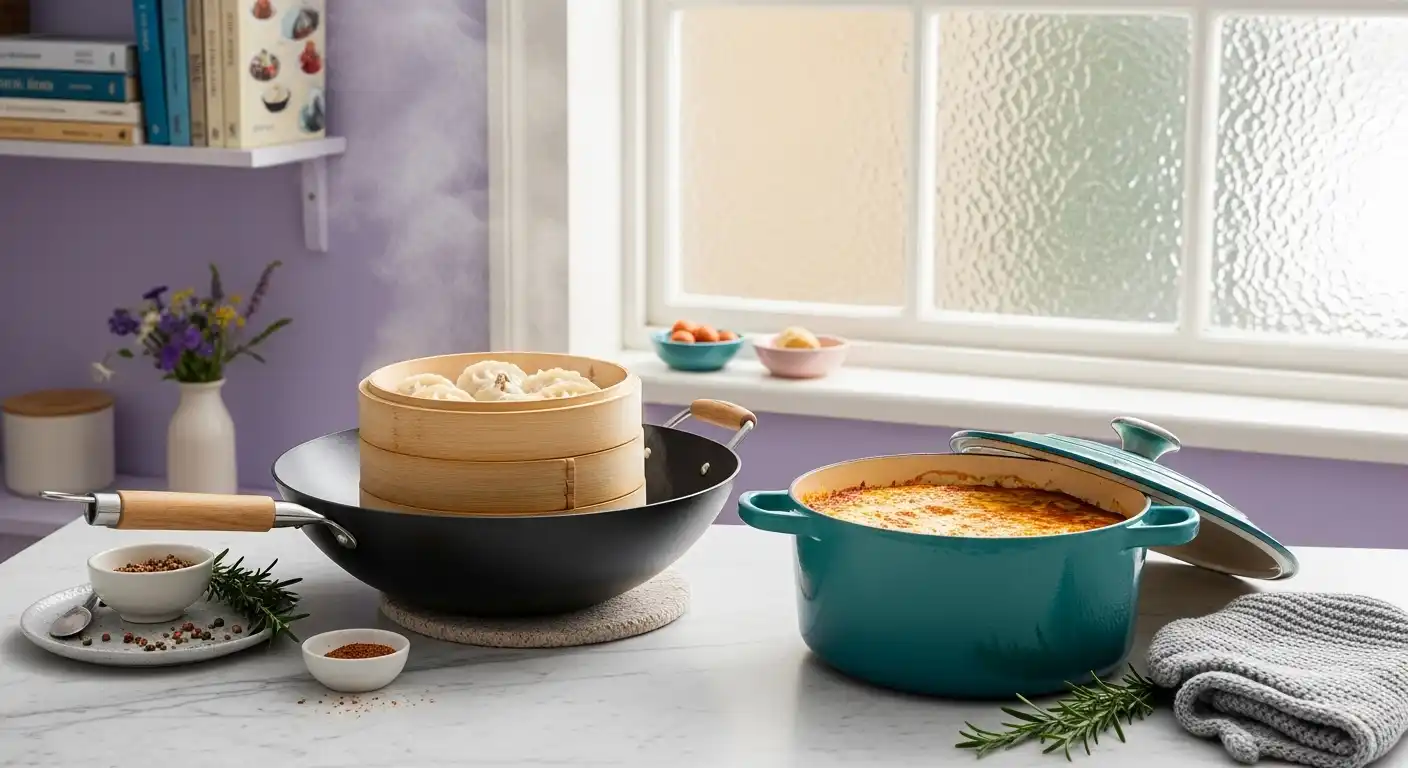
Wok Versatility
A wok’s versatility extends beyond stir-frying. You can use it to steam vegetables, braise meats, or even cook rice.
For more ideas, read what can you cook in a wok besides stir-fry?.
Its shape makes it less ideal for baking or slow-cooking large volumes of liquid-based dishes.
For induction users, check will a wok work on an induction cooktop?.
Dutch Oven Versatility
Dutch ovens are incredibly versatile, handling everything from stovetop simmering to oven baking.
They’re perfect for soups, casseroles, and even desserts like cobblers. For bread enthusiasts, see how big of a Dutch oven do I need for bread?.
They’re less suited for quick, high-heat tasks like stir-frying due to their weight and slower heat response.
Maintenance and Care
Wok Maintenance
Woks, especially carbon steel ones, require seasoning to maintain their non-stick surface and prevent rust.
Learn how in how to season a wok carbon steel. Cleaning is simple but specific—avoid dishwashers. See how to clean a wok.
🎄 Christmas & Year-End Amazon Deals !
Don’t miss out on the best discounts and top-rated products available right now!
*As an Amazon Associate, I earn from qualifying purchases.
Over time, a well-seasoned wok develops a patina. Curious about its appearance? Check what should my wok patina look like?.
Dutch Oven Maintenance
Enameled Dutch ovens are low-maintenance and don’t need seasoning, but cast iron versions do. For guidance, read cleaning a Dutch oven.
Avoid dishwashers for enameled models to preserve their finish, as noted in can you put an enamel Dutch oven in the dishwasher?.
Cast iron Dutch ovens require occasional seasoning to stay rust-free and non-stick.
Stovetop Compatibility
Woks can be tricky on certain stovetops. Flat-bottom woks work better on electric or glass-top stoves.
For details, see can you use a wok on a glass-top electric stove?.
Dutch ovens are universally compatible, including with induction stovetops, thanks to their flat, heavy base. They’re a safe bet for any kitchen setup.
Which Should You Choose?
Choosing between a wok and a Dutch oven depends on your cooking style.
If you love quick, vibrant dishes like stir-fries or fried rice, a wok is your go-to.
For the best options, explore what wok should I buy?.
If slow-cooked, comforting meals like stews, roasts, or bread are your preference, a Dutch oven is ideal.
For alternatives, check substitute for Dutch oven.
🎄 Christmas & Year-End Amazon Deals !
Don’t miss out on the best discounts and top-rated products available right now!
*As an Amazon Associate, I earn from qualifying purchases.
Cost and Durability
Woks are generally affordable, with quality carbon steel options starting at $30-$60.
They’re durable if properly maintained, though they may need occasional reseasoning.
Dutch ovens, especially enameled ones, are pricier, often ranging from $80 to $400.
Their durability is unmatched, often lasting decades with minimal care.
Wok Vs Dutch Oven: A Quick Comparison Table
| Feature | Wok | Dutch Oven |
|---|---|---|
| Best For | Stir-frying, deep-frying, steaming | Slow-cooking, braising, baking |
| Material | Carbon steel, cast iron | Cast iron, enameled cast iron |
| Heat Response | Fast, high heat | Slow, even heat |
| Maintenance | Requires seasoning, hand-wash | Low-maintenance (enameled) |
| Stovetop Compatibility | May need flat bottom for electric | Universal compatibility |
| Price Range | $30-$100 | $80-$400 |
Final Thoughts
The Wok Vs Dutch Oven debate boils down to your cooking preferences.
A wok is your ally for fast, high-heat dishes that burst with flavor, while a Dutch oven is perfect for slow, soul-warming meals that feed a crowd.
Both are worthy investments, and many kitchens benefit from having both.
For more cookware comparisons, check out wok vs saucepan or Dutch oven vs slow cooker.
Which one will you choose? Let your recipes guide you, and happy cooking!

